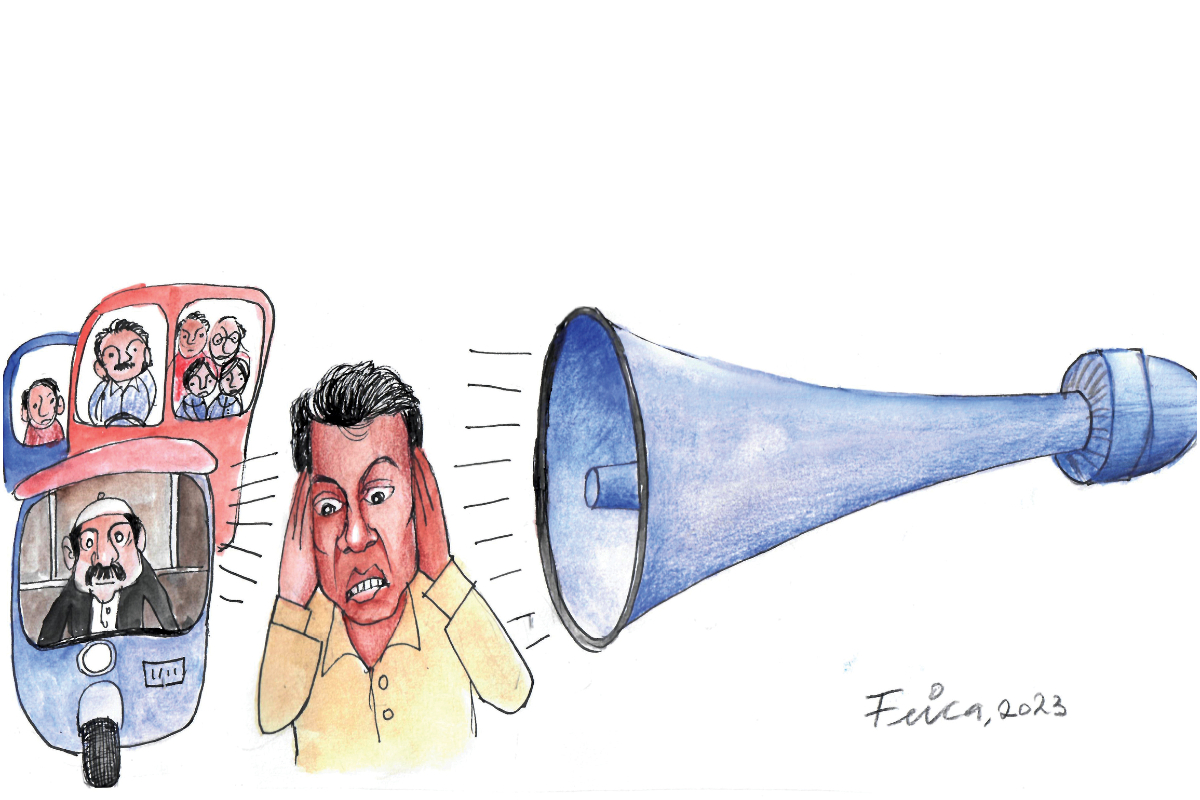
Sindh’s killer noise pollution
Unregulated noise in urban areas causing hearing loss, psychological problems: studies
Karachi: The runaway urbanization in Sindh province, and other parts of the country, is causing noise pollution which is hurting the ecosystem and creating numerous health hazards for the citizens.
Among the major causes of this pollution are the chaotic vehicular traffic, and misuse of megaphones and recorded audio advertisements played on loudspeakers by hawkers. Sirens and hooters of police vehicles and ambulances, including routine horn honking by motorists and bikers on the roads. Added to this is the clangor of electricity generators that residents, banks and shopkeepers switch on during the hours of power loadshedding.
This cacophony is causing agitation, anxiety, hearing loss, diminishing levels of tolerance and stamina, as well as, many other psychological problems in public. The situation is made worse by the fact that there is no official policy to counter these trends, and therefore no evidence of any stringent actions being taken against the offenders.
Bol News spoke to some environmentalists and psychiatrists to figure out how and to what extent is this noise damaging human life and behaviours in our society. Naeem Ahmad Mughal, Director-General Sindh Environment Protection Agency.
“We are planning to launch a campaign against noise and air pollution, involving relevant stakeholders such as the police, the Karachi Metropolitan Corporation (KMC), the Defence Housing Authority (DHA) including the cantonment boards. We have conducted such campaigns in the past as well, and have identified causes and effects of noise pollution on human population.”
“We are advocating a legal ban on a number of activities, instruments and gadgets, including the use of megaphones by hawkers and charity organisations, modification of motorbike silencers, pressure horns used by heavy vehicles, and fireworks at wedding ceremonies, among others. It is our collective responsibility to bring peace to the life of the citizens, and all the concerned organisations must actively play their part in making this a reality.
We conducted a recent survey of more than 90 residential, commercial and industrial zones across Karachi, and found a high vulnerability to hearing impairment in the areas of Malir, District Central and District East. Noise levels in areas such as the Nursery flyover, the Jail Chowrangi stop, Soldier Bazaar, Garden East, the Quaid-e-Azam mausoleum, Qayyumabad, Mehmoodabad, Drigh Colony, the Jamia Millat Road and Pak Colony were found to be in excess of the Sindh Environmental Quality Standards (SEQS) limit of 75 decibels (dB). Noise levels in District West, Korangi and District South were within the SEQS limits, however.”
Nazifa Butt, senior manager climate & energy, WWF-Pakistan “Noise above 70 dB over a prolonged period of time may start to damage hearing, while noise above 120 dB can cause immediate damage to the ears. The US Environmental Protection Agency (EPA) and the World Health Organization (WHO) recommend maintaining environmental noises below 70 dB, with up to 75 dB for a maximum duration of eight hours only in order to prevent noise-induced hearing loss.”
“The WHO puts the acceptable level of noise in residential areas at 55 dB and 70 dB for all other areas. Population growth and urbanization have blurred the distinction between residential and commercial zones in many developing countries. The problem has reached alarming proportions as heavy traffic, construction work and industry located in the proximity of human settlements push noise pressure to levels far exceeding WHO guidelines.”
Noise during a typical plane journey can vary significantly. Take-off and landing moments are the loudest, when noise levels inside the cabin can reach 105 dB. Noise levels in air jets are even higher, and may range between 140 dB and 165 dB.
How can this situation be improved? Guidance and advice alone cannot serve the purpose unless stringent action is taken and heavy penalties imposed on violators. Standards for noise emission of motor vehicles should be revised, and traffic police personnel must start a campaign to distribute “no-honking” stickers to children as a takeaway for their parents. Children can influence their parents not to toot horns unnecessarily. Traffic police should also put sensors on the red light that make a green signal turn red again if someone sounds a horn. Besides, school textbooks should include chapters on civic sense and how to be a responsible citizen.
Low-noise equipment is available and must be incentivized to replace louder machines and vocal equipment. Also, enclosures should be erected around them to prevent their sound from spreading far. Plant more trees as they are good noise absorbents; trees can reduce noise by 5 to 10 dBs in their surroundings. Then, authorities should enforce use of low-pitch horns and effective silencers;
Unfortunately, there is no proper implementation of environmental rules and regulations. The law enforcement agencies usually ignore enforcing these rules because they receive no complaints. They may also lack technical expertise, or training regarding the awareness of harmful levels of noise.
Dr Haider Naqvi, chairman Department of Psychiatry, Dow Medical College “In developed countries you often see road signs reminding commuters not to honk horns in front of a hospital or a school. People also respect those rules because there are heavy fines for violators. But in our part of the world, we see peddlers shouting out loud to sell aloo-chana in front of schools, or tea sellers shuffling through hospital corridors to sell their drinks. This is not only a violation of the rules, but an unthoughtful way to make ends meet. Both the administration, and the people in general, need to condemn this and help enforce civic responsibility to prevent noise in public places.”
“Noise is a fundamental component of the creation. It is how human beings express their emotions with each other. There is an elaborate system in the brain which receives sounds through the hearing apparatus and decodes them. The cognitive component is separated from the emotional inflection to give meaning to communication. This is not only essential for day-to-day life, but also for a deeper emotional and spiritual understanding of life’s purpose and meaning.”
Like all human processes, noise processing is also subject to abuse. Excessive and unwarranted noise has an overwhelming effect on human beings – especially women and children. When it reaches overwhelming proportions, it can cause stress, which has deleterious effects on daily life routines, causing people to key-up, become irritable and jumpy on minor provocation. The effects of noise on human behaviour are subliminal. Those affected don’t know what was the last straw that broke camel’s back; was it the background traffic noise, a blazing advertisement on the radio, or the aggressive comment of a boss.
How to reduce noise levels?
To mitigate noise pollution, following measures can be opted.
- People should wear earplugs whenever exposed to elevated noise levels.
- Alternate routes and management of traffic should be suggested by the Transport and Mass Transit Department.
- Traffic flow should be restricted after 2200 hours.
- Vehicle maintenance and management policies should be strictly implemented by the government.
- Modification of by-laws should be done.
- Awareness campaign for people should be organized by academic institutes.
- Identification of separate points within the area which creates high noise should be carried out by monitoring authorities (such as EPA).
- Enforcing the use of silencing techniques for high-noise points by the Government.
- Green belt along the roads should be maintained by KMC.
Catch all the Urban Insight News, Breaking News Event and Latest News Updates on The BOL News
Download The BOL News App to get the Daily News Update & Live News.





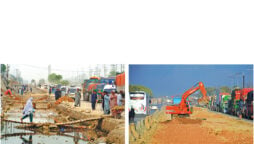
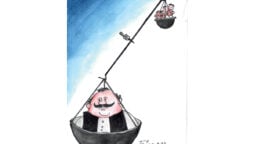
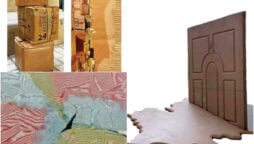
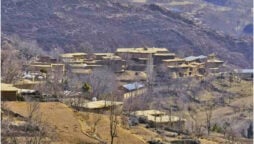



 Read the complete story text.
Read the complete story text. Listen to audio of the story.
Listen to audio of the story.